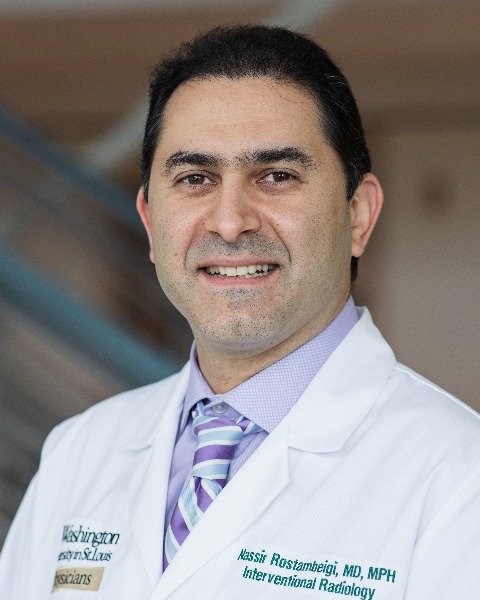Abstracts
Organizational learning in prostatic artery embolization
Friday, May 19, 2023
1:27 PM - 1:36 PM East Coast USA Time
Location: New York East

Nassir Rostambeigi, MD, MPH
Washington University in St. Louis
Washington University in St. Louis
Chesterfield, Missouri, United States
Primary Author(s)
Background: Prostatic artery embolization (PAE) is a relatively complex procedure. We propose that PAE offers an opportunity to analyze organizational learning.
Purpose/Objective: We aimed to evaluate the learning curves in establishing a PAE practice.
Materials & Methods: Between July 2020 and Dec 2022, 103 patients underwent successful bilateral PAEs in a single academic institution by one interventional radiology attending who was assisted by either a physician trainee. The attending started the PAE practice three years after completing fellowship. Fluoroscopy time, reference point air Kerma, and procedure duration were collected. Symptoms, quality of life and complications were assessed. Variables such as team composition, supplies and equipment were tracked. Data were analyzed as a time series using tools from statistical process control (Minitab 21.3.1).
Results: Mean patient (SD) age was 72 (9) yrs. Mean (SD) prostate gland volume was 132 (109) milliliters. Four (3.8%) and 25 (24%) patients required PAE for treatment of gross hematuria and retention, respectively.
Success for resolution of hematuria was %100, and for resolution of retention was 96%. International prostate symptoms scores dropped from 20 to 6 at 1 month and quality of life improved from Unhappy to Pleased (p < 0.001).
Various process measures such as fluoroscopy time, procedure duration and reference point air Kerma demonstrated consistent drop in values. From the first 20 cases to last 20 cases, median procedural duration and fluoroscopy times (min) declined from 265 to189, and from 72 to 52, respectively. The Xbar-S graphs indicated the process was stable, indicating a persistent continuous decline study items.
Conclusion: In an academic interventional radiology team PAE was introduced and improved over time while consistently achieving desirable outcomes. This reliably depicts organizational learning and demonstrated that when consistent processes are pursued there will be a stable progress in a complex procedure such as PAE.
Purpose/Objective: We aimed to evaluate the learning curves in establishing a PAE practice.
Materials & Methods: Between July 2020 and Dec 2022, 103 patients underwent successful bilateral PAEs in a single academic institution by one interventional radiology attending who was assisted by either a physician trainee. The attending started the PAE practice three years after completing fellowship. Fluoroscopy time, reference point air Kerma, and procedure duration were collected. Symptoms, quality of life and complications were assessed. Variables such as team composition, supplies and equipment were tracked. Data were analyzed as a time series using tools from statistical process control (Minitab 21.3.1).
Results: Mean patient (SD) age was 72 (9) yrs. Mean (SD) prostate gland volume was 132 (109) milliliters. Four (3.8%) and 25 (24%) patients required PAE for treatment of gross hematuria and retention, respectively.
Success for resolution of hematuria was %100, and for resolution of retention was 96%. International prostate symptoms scores dropped from 20 to 6 at 1 month and quality of life improved from Unhappy to Pleased (p < 0.001).
Various process measures such as fluoroscopy time, procedure duration and reference point air Kerma demonstrated consistent drop in values. From the first 20 cases to last 20 cases, median procedural duration and fluoroscopy times (min) declined from 265 to189, and from 72 to 52, respectively. The Xbar-S graphs indicated the process was stable, indicating a persistent continuous decline study items.
Conclusion: In an academic interventional radiology team PAE was introduced and improved over time while consistently achieving desirable outcomes. This reliably depicts organizational learning and demonstrated that when consistent processes are pursued there will be a stable progress in a complex procedure such as PAE.
